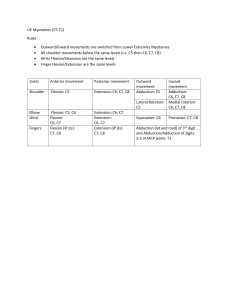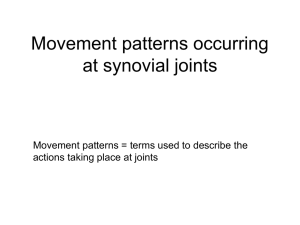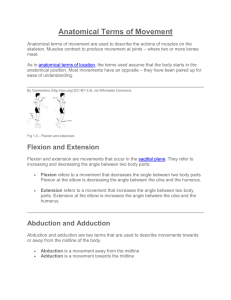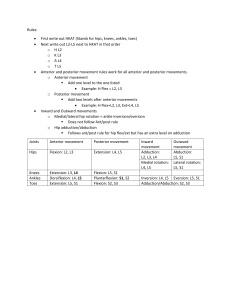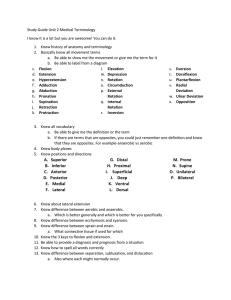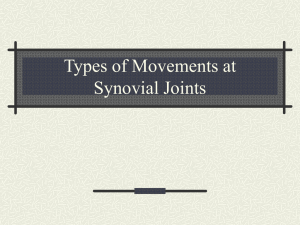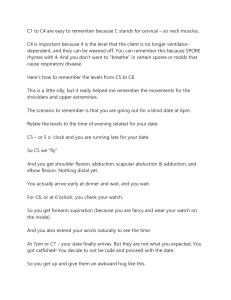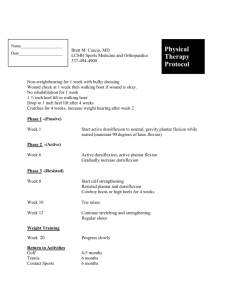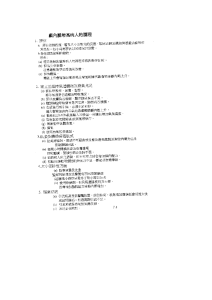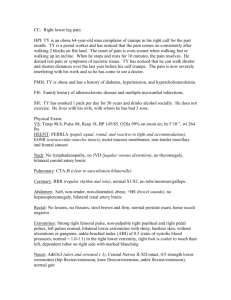PHYSICAL EXAMINATION: The patient is awake, alert and oriented
advertisement
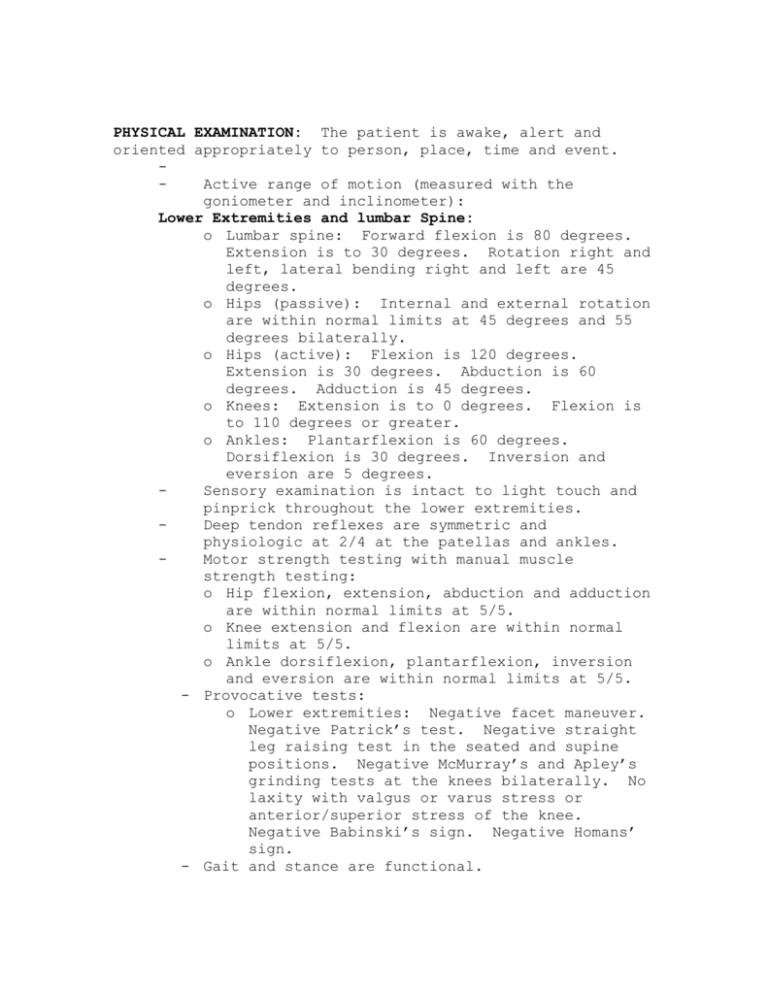
PHYSICAL EXAMINATION: The patient is awake, alert and oriented appropriately to person, place, time and event. Active range of motion (measured with the goniometer and inclinometer): Lower Extremities and lumbar Spine: o Lumbar spine: Forward flexion is 80 degrees. Extension is to 30 degrees. Rotation right and left, lateral bending right and left are 45 degrees. o Hips (passive): Internal and external rotation are within normal limits at 45 degrees and 55 degrees bilaterally. o Hips (active): Flexion is 120 degrees. Extension is 30 degrees. Abduction is 60 degrees. Adduction is 45 degrees. o Knees: Extension is to 0 degrees. Flexion is to 110 degrees or greater. o Ankles: Plantarflexion is 60 degrees. Dorsiflexion is 30 degrees. Inversion and eversion are 5 degrees. Sensory examination is intact to light touch and pinprick throughout the lower extremities. Deep tendon reflexes are symmetric and physiologic at 2/4 at the patellas and ankles. Motor strength testing with manual muscle strength testing: o Hip flexion, extension, abduction and adduction are within normal limits at 5/5. o Knee extension and flexion are within normal limits at 5/5. o Ankle dorsiflexion, plantarflexion, inversion and eversion are within normal limits at 5/5. - Provocative tests: o Lower extremities: Negative facet maneuver. Negative Patrick’s test. Negative straight leg raising test in the seated and supine positions. Negative McMurray’s and Apley’s grinding tests at the knees bilaterally. No laxity with valgus or varus stress or anterior/superior stress of the knee. Negative Babinski’s sign. Negative Homans’ sign. - Gait and stance are functional. - 1-2+ pulses are palpated at the dorsalis pedis and tibialis posterior arteries. - No lower extremity or pedal edema noted.
